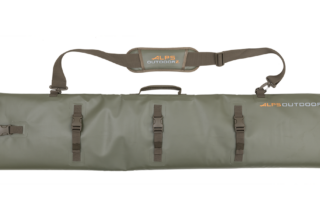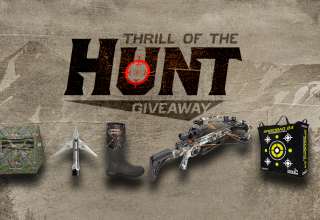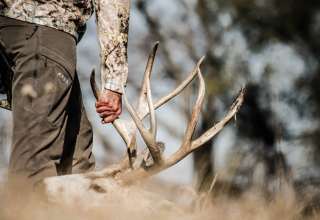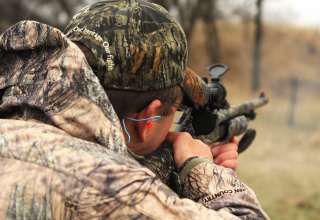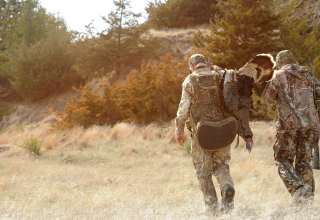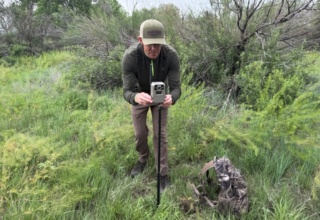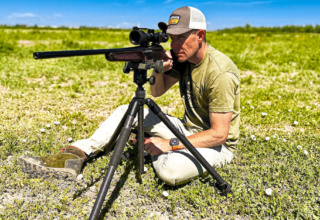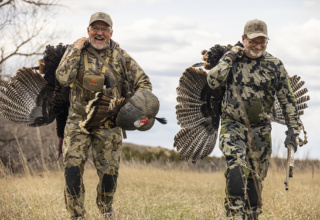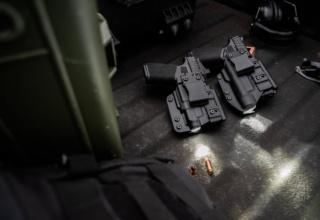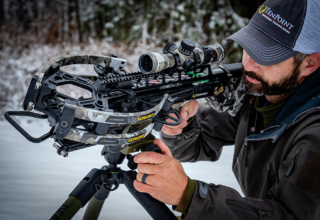To save yourself from injury, it’s important to understand how a hunt pack should fit and which pack serves your needs
By Elle Lawrence
You’ve dreamed of a backcountry hunt far from the trailhead, where you watch a bull elk fall in your riflescope. The work to find that bull was just part of the adventure — the other half is quartering and getting your quarry back to camp to revel in the experience.
The problem with this dream is that you’re forgetting the technicalities. When you have a bull on the ground, that’s 200 pounds of meat, plus the head and the hide to get back to your truck — all piled on your back. You won’t be able to carry it out in one trip, which means you’ll be putting multiple miles on your boots…and your back, knees, and hips. To ensure you don’t cause yourself injury, it’s vitally important that you have a pack that is made to fit your torso properly and is capable of the task you are asking of it.
Pack Frames and Suspension Systems
Deciding which type of frame you need depends on how many days you plan to camp. Will you be backpacking for a couple of days or just hunting from the truck for a day? Are you hunting elk or mule deer? All these variables will factor into what type of pack and frame you need.
Having the right sized frame is important. If you’re wearing a pack that doesn’t fit correctly, your shoulders, hips, and back will bear the weight disproportionally, causing discomfort at the least, injury at worst.
An internal frame is form-fitting and holds its load closer to your body; however, not all internal frames are adjustable to fit your torso size. With the Traverse EPS pack by ALPS you can adjust the size to fit your particular body type. You can also tighten the shoulders or hip belt to further increase the comfort.
An external frame is found outside of the pack and is completely adjustable to fit your torso length. This may bring to mind the square metal frames from the old days — those are still available today! The technology, though, has advanced and the frames are now made with lightweight materials and are barely visible on external frame packs. These frames come with suspension systems that are made to adjust to your specific shape and to distribute the weight of your pack evenly across your body thanks to a hip belt, shoulder straps, and load lifters.
How Do I Measure My Torso?
We all come in different shapes and sizes. You could be short with a long torso, tall with a short torso, and vice versa. If your pack doesn’t fit you properly, you’ll be exerting excess energy instead of saving that for the hunt. So, how do you measure yourself?
If you’re not near a store with professionals who can measure you, try these simple at home steps:
- Use either a tailor’s-style measuring tape or a piece of string that you can lay on a yardstick afterwards.
- Tilt your chin down and find the C7 vertebra at the base of your neck (it will be visible with your chin down). Take your thumbs and feel along the back of your hips to locate your iliac crest—it will be the very top of your hip bones. Where your spine meets the iliac crest is the endpoint of your measurement.
- Have someone drape the measuring tape or string from your C7, along the contours of your spine, down to the top of your iliac crest. You now have your torso length.
Understanding Bag Size and Meat Haulers
There are multiple types of packs on the market for hunters. They range from day packs that are small to external frame packs that are completely adjustable and made to carry gear for multiple days off-grid. General bag size recommendations go as such:
- Day/overnight pack: under 2,500 cubic inches, 20–35 liters
- Two days: 2,500–4,000 cubic inches, 35–50 liters
- Three to five days: 4,000–6,000 cubic inches, 50–80 liters
- Five plus days: 6,000 cubic inches, 80 liters and up
A day pack will do exactly what the name suggests: it carries enough gear for a day of hunting. An internal frame is typically found in day packs. Since you cannot adjust an internal frame pack, they are not meant to carry heavy loads. This type of pack is for the hunter who isn’t too far from the truck and plans on being back home that evening. A day pack is good to carry your gear and a couple of backstraps inside of the bag.
The ALPS OutdoorZ Contender X is the ultimate day pack for hunters. The pack features an innovative L-shape internal frame that allows the pack to stand up straight when placed on a flat surface. A U-shaped zipper provides flip down access to the main compartment of the pack, and a molded foam suspension provides extra comfort on your back and shoulders.
External frame packs not only give you complete adjustability to ensure comfort, they also generally have large bags for carrying gear and meat hauling shelves. A meat hauling shelf is where suspension systems can be separated from the frame to give you space to secure a game bag filled with meat. This allows you to secure heavy game quarters in the middle of the pack and close to your body for a comfortable pack out.
The ALPS OutdoorZ Trophy X + Pack is a great choice for the backcountry hunter. An external frame meat hauling pack with a detachable 3900 cubic-inch pack gives you the perfect set up for when you have an animal on the ground. An adjustable torso range allows you to customize the pack to your body to comfortably haul out heavy loads. The pack bag has its own stowable shoulder straps in case you want to use the bag away from the frame. The Trophy X frame is perfect for packing out game quarters thanks to its roll-out lashing system and heavy-duty freighter shelf.
Before hunting with your new pack, make sure you get it adjusted properly, testing it with loads and spending some pre-hunt time walking with it on your back. You want to work out all the bugs before you hit the trail.
- Judging Western Game on the Hoof - July 8, 2020
- Understanding Hunting Packs - June 9, 2020
- Turkey Load Patterning 101 - March 16, 2020






